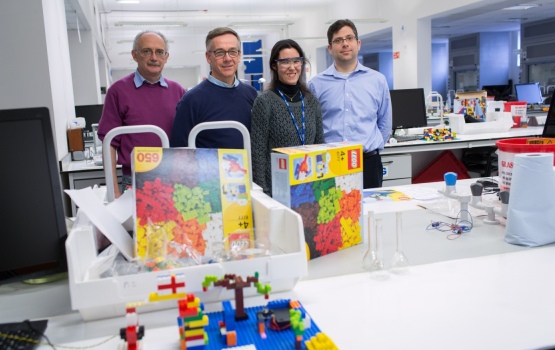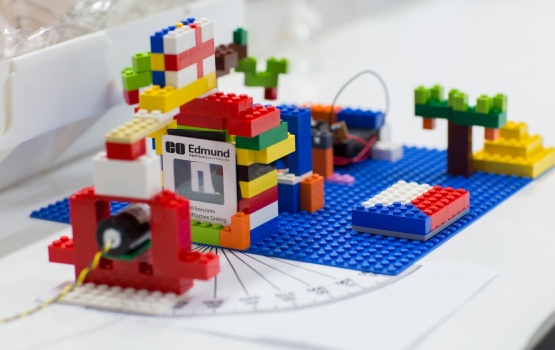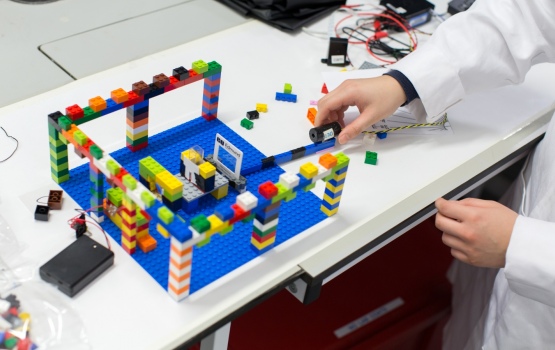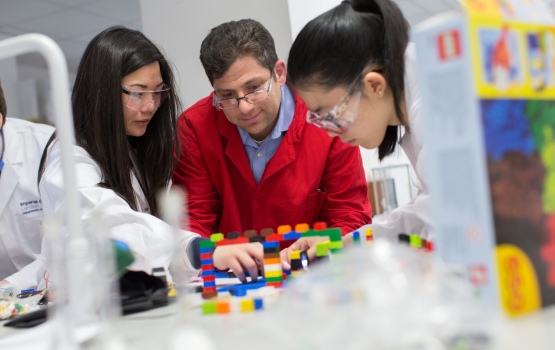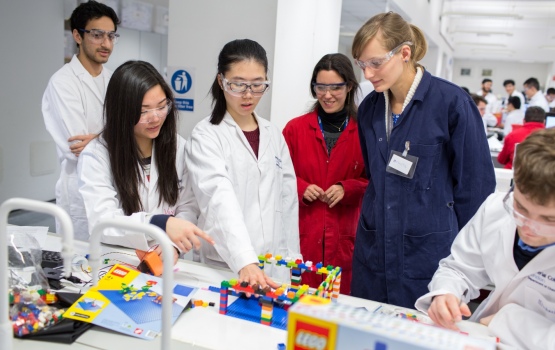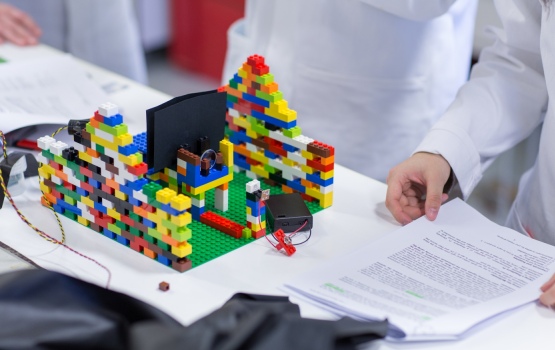Imperial students bring play into the lab with LEGO based Chemistry project
by Jon Narcross

An undergraduate teaching project is using LEGO to develop students' understanding of complex scientific instruments.
The project, part of a first year Chemistry lab, challenged the students to build and optimise a UV-Vis spectrometer using the plastic construction toy. The challenge was designed to give them hands on experience in building and optimising the equipment while improving their own measurement skills.
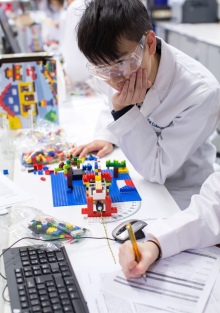 As well as LEGO, the students used a range of commercial components to build their spectrometers with the aim of making the device as sensitive as possible by measuring its detection limits using a number of samples.
As well as LEGO, the students used a range of commercial components to build their spectrometers with the aim of making the device as sensitive as possible by measuring its detection limits using a number of samples.
The students recorded the results using an adapted Raspberry Pi computer to collect the data, which required them to use basic Linux and Python programming skills to analyse their findings.
Dr Joshua Edel, Department of Chemistry, who oversaw the initiative, said: “This is the first time we’ve done this type of project. It’s the students’ first introduction into measurement sciences and we wanted to create a fun problem solving element to what they’re doing and at the same time ensure they refine their analytical skills.”
Dr Kristelle Bougot-Robin, Department of Chemistry, who also helped to create the lab, added: “LEGO is a great medium for the students to develop their spectrometers and we also thought it would bring a bit of fun to the lab. The idea to use it came as it’s an easy to use building material that everyone is familiar with. ”
LEGO is a great medium for the students to develop their spectrometers and we also thought it would bring a bit of fun to the lab.
– Dr Kristelle Bougot-Robin
Department of Chemistry
The students tackled the problem in a variety of ways, with designs ranging from functional box shaped devices to more elaborate creations based on Greek temples adapted to house the spectrometer equipment.
Filip Anies and Elinor Winstanley were two students that took part in the project. Elinor said: “It was great to do something creative with the LEGO. It’s not something you get do to every day.”
“Creating the device yourself gives you a better appreciation of how the equipment works. I feel like I’ve learnt a lot more from building it myself.” Filip added, “We incorporated flags into our design as a bit of fun to represent the four nationalities of the group that built it.”
As well as this lab project Dr Edel sees a lot of potential in this type of project as a way of helping students develop a greater understanding of how scientific equipment works.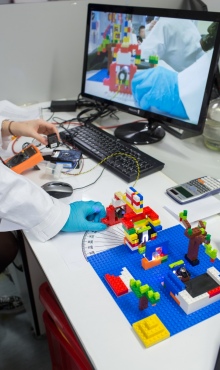
Dr Edel said: “Over the next few months we’re going to look at how we can simplify the project and take it into schools as an outreach project. It’s an interesting experiment and it would be great to use LEGO as a way of developing scientific knowledge in school children.”
Dr Edel, Dr Bougot-Robin and some of the students will be exhibiting their creations on Thursday 19 February as part of the College’s Imperial Fringe: Lit Up event where visitors will be able to try the spectrometers for themselves.
The Fringe is showcase of hands-on activities by Imperial's researchers and student societies, showing that there's more to light than meets the eye.
See below for a slideshow of images from the project:
Article text (excluding photos or graphics) © Imperial College London.
Photos and graphics subject to third party copyright used with permission or © Imperial College London.
Reporter
Jon Narcross
Communications and Public Affairs
